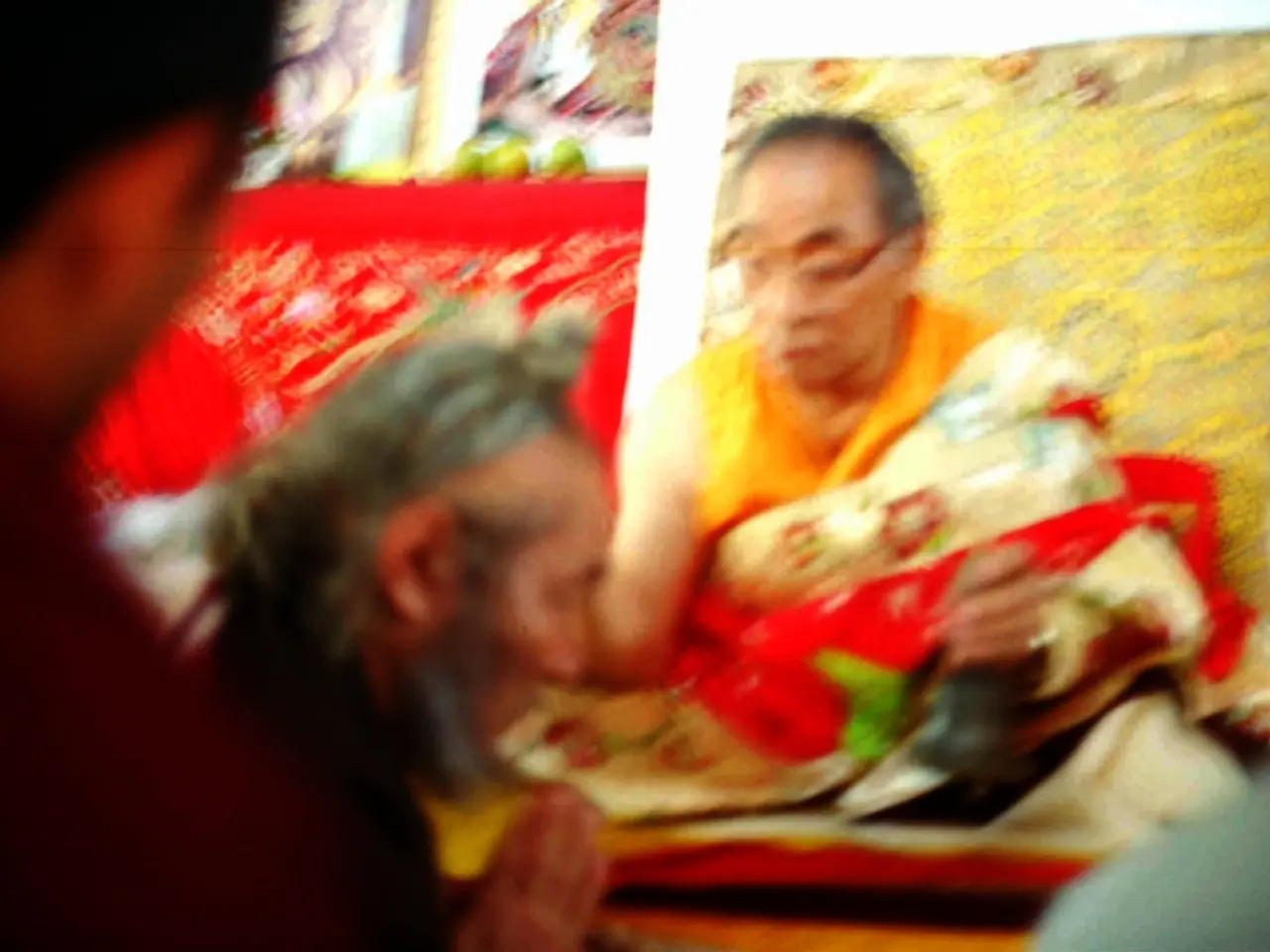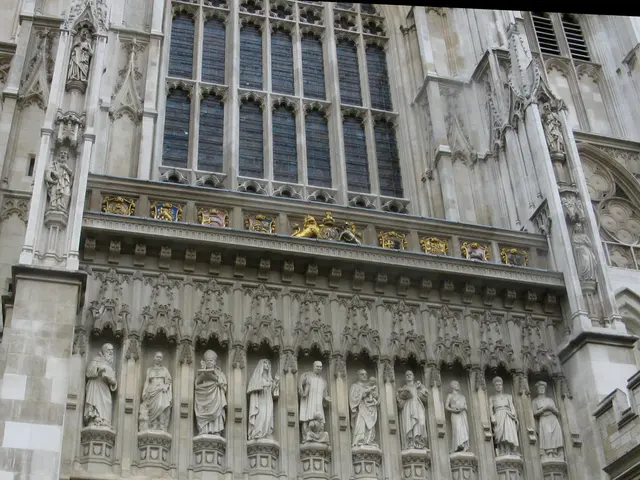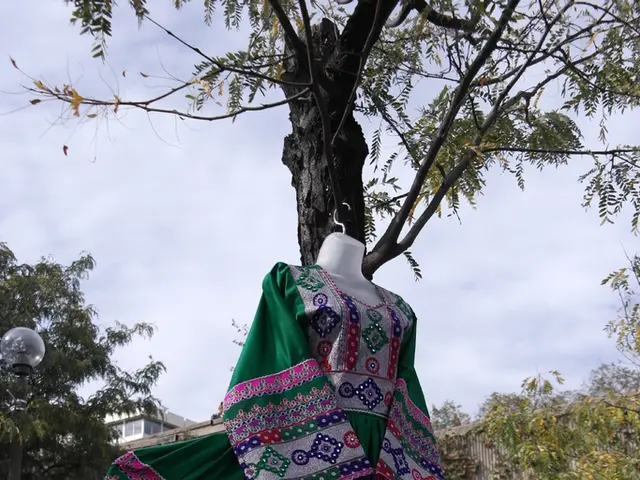Age-old Kazakh Customs Through Life Stages, From Infancy to Young Adulthood
Celebrating Life and Tradition: Kazakh Birth and Early Childhood Rituals
The Kazakh people have a rich cultural heritage, deeply rooted in their nomadic past, which is beautifully reflected in the traditions and celebrations surrounding a child's birth and early childhood.
One of the most significant rituals is the Tussau kessu (or Tussay kessu), a ceremony marking a baby's first steps. During this event, the child's "tussay" (a symbolic fetter or tether) is cut, symbolizing the child's transition to independence and future life journey. This celebration is shared with family and community, demonstrating the importance of collective support in child-rearing.
Another key tradition is the naming ceremony, which expresses the community's affection and responsibility towards the newborn. This event outlines the values and ways the child should be nurtured, illustrating how Kazakh culture emphasizes the integration of the child into family and society from the beginning.
In early life, Kazakh traditions often invoke mythical maternal figures like Ot Ana (Mother of Fire) and Ūmai Ana, symbolizing protection, family unity, and the elemental forces of life. These figures highlight how spiritual beliefs and respect for natural elements play a role in raising children and safeguarding their wellbeing.
The Kazakh baby bath tradition also carries cultural significance. Bathing rituals include elements tied to prosperity, such as using items connected to livestock (a symbol of wealth in Kazakh nomadic culture), which symbolically link the baby to abundance and fortune.
The first 40 days of a child's life are considered sacred. During this period, a light was traditionally burning near the cradle to ward off dark forces. Shildehana, the joyous celebration marking the birth of a child, is held within the first week of life on an odd-numbered day.
The Tilashar ceremony is a crucial part of this period, used to encourage a silent child to start speaking. During this ceremony, symbolic gestures such as tying sheep intestines around the child's neck and offering words of wisdom are performed. The Tilashar ceremony is considered a precursor to another important milestone celebration, the Alippe toi, held to mark a child's entry into the first grade.
Kazakhs traditionally measured human age through life cycles known as mushel zhas, each spanning 12 years. Upon learning of the baby's arrival, relatives and friends would share the news by calling out "suyunshi," meaning they brought joyful tidings. During the vulnerable transitional years of a new mushel zhas, individuals observed a symbolic ritual of generosity by distributing cherished possessions to loved ones or those in need.
Tusaukeser is a meaningful Kazakh tradition that celebrates a child's transition to walking independently. Upon this milestone, the child is often dressed in traditional clothing and paraded around the community, symbolizing their growing independence.
In modern times, Shildehana often coincides with the discharge of the mother and baby from the hospital. The family gathers their loved ones for a celebratory feast, during which guests extend blessings for the child's health and longevity. In some versions of the Tilashar ceremony, parents prepare their children for speech at six months old by softly singing songs and reciting poems into their ears.
In modern times, the Tilashar and Alippe toi ceremonies are often celebrated in cafes or restaurants. During the Tilashar ceremony, a ram is traditionally slaughtered to mark the occasion, with the meat from the slaughtered ram being shared entirely with guests, symbolizing a fresh start for the individual.
Together, these customs illustrate the Kazakh people's emphasis on family unity, community involvement, spiritual protection, and the continuity of prosperity and social values. They reflect a heritage shaped by a nomadic lifestyle where survival, social cohesion, and respect for nature are paramount.
References:
- Tussau Kessu: The Tradition of a Kazakh Child's First Steps
- Naming Ceremony in Kazakhstan
- Mythical Maternal Figures in Kazakh Culture
- Kazakh Baby Bath Tradition
- Shildehana: The Celebration of a New Life
- Tilashar: Encouraging Speech in Kazakh Children
- Alippe Toi: A Kazakh Tradition for School Entrance
- Mushel Zhas: The Kazakh Life Cycle
- Tusaukeser: The Tradition of a Child's First Steps
- Besik Salu: The Tradition of the Cradle
- Symbolic Items in the Cradle
- Kyrkynan Shygaru: The Tradition of Introducing the Baby to the Community
The Kazakhs' deep-rooted past in nomadic lifestyle is also reflected in their home-and-garden traditions, as symbolic items from livestock, a significant symbol of wealth in their culture, are used in the baby bath ritual to link the newborn to prosperity. The lifestyle of Kazakhs continues to emphasize the importance of community and spiritual protection even in modern times, as many rituals such as the Tilashar ceremony are celebrated in cafes or restaurants.




